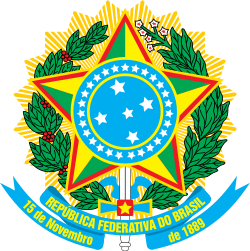Brazilian Election Justice
The Justiça Eleitoral do Brasil (Brazilian Election Justice) was created by the Decreto nº 21.076, of 24 February 1932, representing one of innovations of the Brazilian Revolution of 1930 (or coup d'état de 1930). In 1932 there was the first edited the Brazilian Election Code, inspired by the Election Justice of the Czech Republic and the ideas of Joaquim Francisco de Assis Brasil, a politician, farmer and ambassador[1]

Supporting Law
Nowadays, the existence and regulation of the Election Justice in Brazil is determined in the articles 118 until 121 of the Federal Constitution of 1988, that established its exclusive attribution of the Federal Union legislating about Elections Law.[2]
The Election Code and other laws confer Executive and Legislative powers to the Superior Electoral Court((TSE)). The law, even if it is named to provide Judicial powers, include an aggregation of administrative and normative functions as well.[3][4]
Comparative law
In other countries, the solutions adopted to distribution of powers in the election process differ from one country to the other.[5] In Argentina and Finland the Executive Power itself administers the elections; In United States, France and Germany, this role is played in city level; in Chile and Uruguay, there are independent organs, outside the Public Powers structure.
Functions
The functions[6] of Elections Justice are the following:[7]
- Regulating the elections process
- Administration the elections process
- Inspecting the accomplishment of the law
- Inspecting the accounts of the elections campaigns
- Judging controversies about elections
- Punishing violations of elections law
- Answering queries about election regulation
- Judging appeals in election matters.
Bibliography
- Amaral, R.;Cunha, S.S. da. Manual das Eleições, 3ª ed.São Paulo: Saraiva, 2006, ISBN 9788502057401
- Anais do Seminário Brasileiro de Direito Eleitoral. Porto Alegre: Tribunal Regional Eleitoral do Rio Grande do Sul, 1990
See also
References
- Angelim, Augusto N. Sampaio (20 May 2004). "Justiça Eleitoral:Passado e Futuro". Portal Boletim Jurídico. Retrieved 6 April 2012.
- "Constituição da República Federativa do Brasil de 1988". Presiência da República. Retrieved 6 April 2012.
- Cunha, Alcides Munhoz (July 1999). "Justiça Eleitoral e Autenticidade do Sistema Representativo". Revista Paraná Eleitoralaccessdate=6 April 2012. Archived from the original on 2007-08-12.
- "Organização da Justiça Eleitoral e do Ministério Público Eleitoral" (PDF). Editora Jus Podivm. Archived from the original (PDF) on 17 September 2013. Retrieved 6 April 2012.
- "Funcionamento da Justiça Eleitoral em alguns Países". Votoseguro.org. Retrieved 6 April 2012.
- "Glossário Eleitoral" (PDF). Tribunal Regional Eleitoral de MInas Gerais. April 2010. Archived from the original (PDF) on 23 May 2012. Retrieved 6 April 2012.
- Amaral, 2006
External sources
- Page of Tribunal Superior Eleitoral
- Page of Supremo Tribunal Federal
- Page of Conselho Nacional de Justiça
- Bibliografia sobre Direito Eleitoral Library of the Tribunal Superior Eleitoral